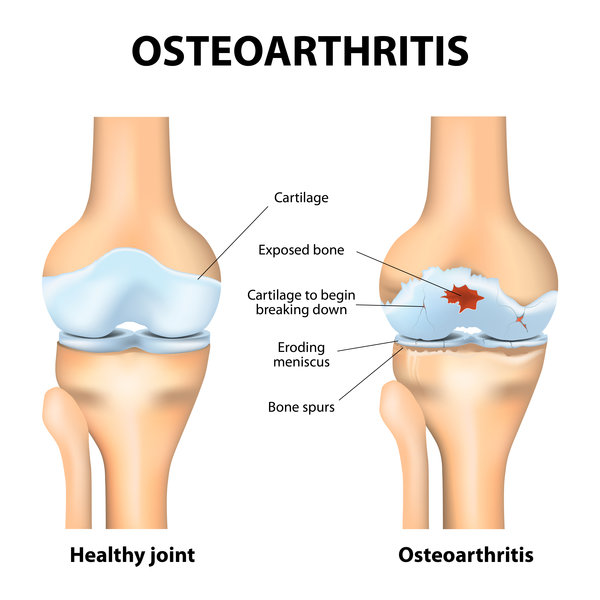 Everyone has heard of arthritis at some point in their life; it is a common ailment of the joints. Osteoarthritis is the most common form of arthritis. The symptoms are inflammation and pain in one or more of the joints of the body. Osteoarthritis is also known as degenerative joint disease and can cause severe pain.
Everyone has heard of arthritis at some point in their life; it is a common ailment of the joints. Osteoarthritis is the most common form of arthritis. The symptoms are inflammation and pain in one or more of the joints of the body. Osteoarthritis is also known as degenerative joint disease and can cause severe pain.
Osteoarthritis affects the cartilage in the joints. Cartilage is the soft, rubber-like connective tissue at the ends of the bones. It cushions the bones of the joints and helps them to move smoothly and efficiently.
Over time depending on the genetics, health, and lifestyle of a person the cartilage in the joints naturally break down from wear and tear. This degeneration of cartilage can cause inflammation, and over time the inflammation causes further degeneration of the cartilage. The overall inflammation and degeneration of the cartilage cause pain, sometimes to the point that mobility becomes a problem. When this is left untreated, the cartilage can wear away entirely leaving bones to rub against each other during normal movement.
Hands, feet, spine, knees and hip joints are the most common joints affected by osteoarthritis because these joints take the most wear from natural movement. A person’s weight, participation in sports activities and jobs can take a toll on their bodies in ways that they don’t even realize.
Osteoarthritis does not have a cure; it does, however, have several methods of treatment. Those plans include medication, low impact exercise, and physical therapy. A physician will begin treating osteoarthritis by reducing the pain and inflammation of the joint by one of the methods mentioned previously. These methods have been proven to work in cases where the cartilage is not completely worn away, and are an alternative to immediate surgery. In the worst cases, a physician will suggest surgery.
When a patient does not respond to non-surgical treatments, and mobility becomes difficult, surgery is recommended. There are a couple of different surgical options available depending on what the patient’s needs are; some are less invasive than others. Surgery is for those with severe or debilitating osteoarthritis.
Some of the most common surgical options for osteoarthritis are Osteotomy, Arthrodesis or Arthroplasty. An osteotomy is a less invasive procedure where the surgeon removes or reduces the size of bone spurs that are interfering with the movement of the joint. Arthrodesis is a little more invasive where the surgeon fuses the bones in severely deteriorated joints. Arthroplasty is a total joint replacement and is considered a last resort for knee and hip joints. Even though these surgeries are options, they are the last resort for cases that do not respond to non-surgical treatments.
Overall there is no prevention for osteoarthritis. It is something that many people will experience in their lifetime. It is treatable, and there are many options available to preserve the quality of life. To prevent ruining the joints or having total joint replacement surgery, one should seek medical attention when the joints start hurting. Pain is the body’s way of telling you that there is something wrong.
For more information, contact Dr. Dan Albright by calling 919-863-6808.





